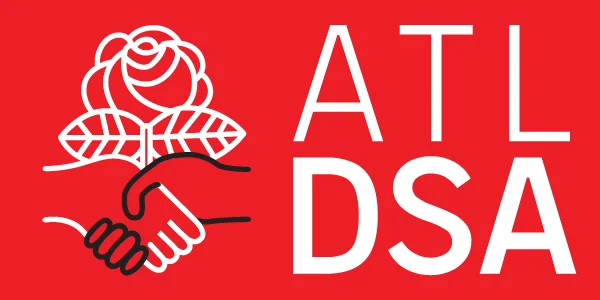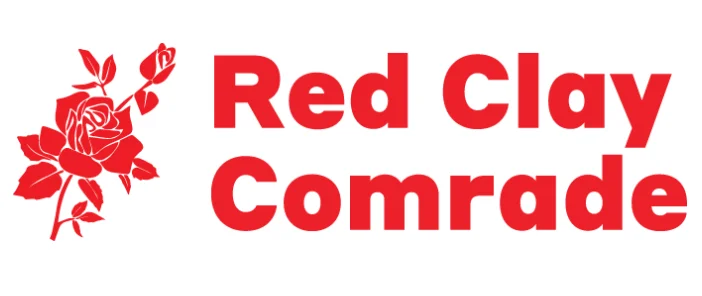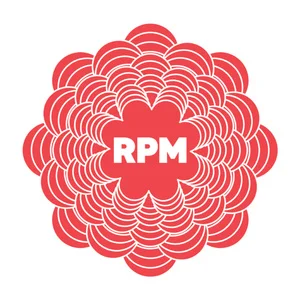

Colorado Springs DSA Statement on the Tragedy at Club Q

It is hard to find the words to express the depth of the trauma and grief that our chapter and community are experiencing in the wake of the mass shooting at Club Q. That we are issuing this statement a few days after the event is a testament to the fact that we have been in deep mourning as we attend multiple community vigils and spend time supporting one another. We all understand how close this act of hatred brought us to losing chapter members who are deeply loved and valued, and our hearts break for our comrades who lost friends and loved ones to this tragedy.
As difficult as it is to move forward, our solidarity with one another and the greater LGBTQ+ community is helping us find the strength to begin the organizing work that must follow. It has not been lost upon us that while CSPD was busy surveilling our chapter last summer and arresting our comrades who were marching for affordable housing in our community, the District Attorney was busy dropping charges against the right-wing terrorist that perpetrated this weekend’s armed attack. It is not lost upon us that this terrorist is the grandson of a fascist MAGA politician in California. It is not lost upon us that Colorado Representatives Lauren Boebert and Doug Lamborn have boosted anti-LGBTQ+ rhetoric while supporting the gun lobby that made this weekend’s tragedy possible. It is not lost upon us that evangelical churches in our city operate as political actors to create a climate of intolerance where bigotry and zealous hatred are incubated. And it is not lost upon us that all these fascist bad faith actors ultimately work together to silence and oppress our community, especially those amongst us who are the most marginalized.
Colorado Springs DSA and the community we serve will not be silenced. We will not submit to the fear that right-wing politicians and their followers try to instill in us. This moment makes it clearer than ever how urgent it is for us to stand up for our community and fight for our rights, to stand against hatred and violent state oppression, to stand against the cold and calculated sacrifice of our BIPOC and LGBTQ+ siblings by fascist capitalists seeking a scapegoat for the inhumane inequality that their greed creates, and we take that stand now, together.
We’ve got us. We stand strong in solidarity, carrying those who are wounded, and march on.


Fight for Abortion Rights, Defeat Herschel Walker
Atlanta DSA Statement on December 6th Senate Runoff Elections
The Senate Runoff Election in Georgia will have important consequences for working-class people across the country. Although Democrats have lost control of the House of Representatives for now, the winner of this runoff will hold a critical Senate seat for 6 years—the entire duration of the next Presidential term. Herschel Walker is a millionaire capitalist and far-right extremist. If elected, he could be the deciding vote that blocks moves to abolish the filibuster and pass other critical legislation. For these reasons we encourage our members, supporters, and the public to vote to defeat Herschel Walker and his far-right agenda.
The 2024 elections will present a huge opportunity for the growing socialist movement to shift the balance of power in the United States. The Left could lead the charge to abolish the filibuster and clear the path for historic gains for the working class by legalizing abortion nationwide and passing the PRO Act. Expanding voting rights could permanently alter the political battlefield and make it impossible for the minoritarian neo-fascists in the GOP to capture the federal government again. Herschel Walker’s election to the US Senate could rule out all of these possibilities for six years.
Make no mistake: working-class people have fundamentally different interests from the neoliberal elites in the Democratic Party establishment. DSA remains committed to advancing our democratic socialist perspective by building a democratic working-class organization. In this election, we are building independent working-class power by making sure that young workers and people of color know how to vote. We are getting out the vote by helping the public navigate barriers to voting, and promoting political issues like abortion rights from a socialist perspective. We encourage everyone to make a plan to vote as early as possible, to join us in continuing to fight for abortion rights no matter who wins the runoff, and to join DSA to help build an economy and society that works for the many, not the few.
Find your polling place and make a plan to vote early at atldsa.org/vote

Georgia Needs a Reproductive Freedom Act

Where were you when you found out that the U.S. Supreme Court had overturned Roe v. Wade? Chances are you remember that moment this past June vividly because for many of us the action was previously thought unimaginable. Even for those who had been paying close attention and saw it coming, the news that the loss of federal protection over reproductive freedom had been confirmed was hard to digest. And in Georgia, the overturning of Roe opened the door for a 6-week abortion ban — which passed in 2019 but was previously blocked by a district court for being unconstitutional — to officially take effect across the state.
Though devastation was felt by so many around the country after the Supreme Court’s Dobbs decision, the truth is, in Georgia — the state with the highest maternal mortality rate in the country — reproductive rights have been under attack for years. Since 2005, Georgia politicians have passed 13 medically unnecessary and politically motivated abortion restrictions, like required waiting periods and insurance coverage regulations. On top of these restrictions, there are only 15 clinics that provide abortions in Georgia. Ninety-five percent of Georgia’s counties do not have an abortion clinic and 55% of Georgia women live in those counties, which means most Georgians must travel a significant distance to abortion providers. This travel can have a serious financial impact on those seeking abortion care, and not just because of transportation costs. Research shows that 60% of people who have an abortion are already parents to one or more child, so childcare costs must also be factored in for those who are forced to travel to obtain an abortion.
Georgians who wish to end their pregnancies also have to contend with anti-abortion fake clinics (also known as anti-abortion centers, AACs, pregnancy resource centers, crisis pregnancy centers, or CPCs), which aim to discourage people from obtaining abortions by posing as real clinics and providing medically inaccurate information. According to the Reproaction Education Fund: Anti-Abortion Fake Clinic Database, there are 99 anti-abortion fake clinics in the state. That means Georgia has over six times more fake clinics spreading false information and shame than real clinics offering safe abortions. Worse still, there is a history of state funds being funneled into these fake abortion clinics. Some anti-abortion fake clinics have financial relationships with state agencies, referred to as “Alternatives to Abortion” or “A2A” programs. According to Mapping Deception: A Closer Look at How States’ Anti-Abortion Center Programs Operate, a report by Equity Forward, Georgia has an A2A program that uses state funding to support fake clinics. Meanwhile, Medicaid does not cover abortions in Georgia. And, just so you’re clear on where hypocritical right-wing candidates in the upcoming Nov 8 election stand on anti-abortion clinics, The Atlanta Journal-Constitution reported that last year, Herschel Walker was paid $20,000 to speak at a fake clinic in Hurst, Texas and $27,000 to speak at one in Augusta, both of which are AACs.
Even with all of the pre-existing abortion restrictions forced on working Georgians, the overturning of Roe v. Wade makes matters even more dire. The Supreme Court decision highlighted a frustration that has been bubbling under the surface for so many citizens regarding an array of issues. High-profile politicians who were already in office inundated our email inboxes with alarming subject lines and messages with no real plan of action beyond “Keep voting Blue.” But how could we believe that continuing to do what we already have been would make any difference? Abortion is overwhelmingly popular across the country and 70% of Georgia voters support abortion access. So, of course, it’s the undemocratic nature of the courts, senate, and gerrymandering that is to blame for this situation, and not those of us who have been voting, election after election. How can we, as working Georgians, change anything?
As Socialists, we are ultimately fighting for universal, free health care and free abortion at the point of service. However, there are some steps we can begin to take legislatively to reclaim and even improve abortion rights in Georgia. Right now, there are local pieces of legislation being proposed to curb the impact of the 6-week ban in Georgia, including county-level decriminalization resolutions and donations to regional abortion funds. Now, with the Georgia legislative session on the horizon, reproductive justice advocates are calling for a statewide Reproductive Freedom Act.
What is the Reproductive Freedom Act (RFA)?
With the right to access abortion care under threat at both the state and national levels, it is past time for our elected representatives to enshrine the right to abortion access and reproductive health care in our state law. That’s where the Reproductive Freedom Act comes in.
Ahead of the 2023 legislative session, reproductive justice advocates are preparing to introduce a Reproductive Freedom Act to the state legislature, with the goal of protecting and expanding access to abortion care across Georgia. With 27 sections, the RFA being proposed would be comprehensive in its support and defense of any person seeking or providing timely, safe, legal, and affordable abortion care. The bill would also fight to remove shame, stigma, and punishment around abortion care, by repealing many current laws and restrictions passed previously by right-wing legislators.
If passed, what would the RFA do?
Based on the current proposal, each section of the RFA pinpoints a specific piece of the puzzle that is achieving reproductive justice for all Georgians. Here is, at a glance, everything the Reproductive Freedom Act would do:
- Ensure that all Georgians have the right to choose or refuse contraception and sterilization, and that those who have the capacity to become pregnant can choose whether to carry a pregnancy to term, give birth, or have an abortion.
- Ensure that no Georgian who ends their own pregnancy will be subjected to investigation and prosecution.
- Repeal a set of laws that criminalize some or all abortion care.
- Repeal the 2019 law that establishes each fetus as a “person,” which gives a fetus rights separate from the pregnant person.
- Repeal law requiring any young person who needs an abortion to notify their parents.
- Repeal a law that requires physicians who care for pregnant patients later in pregnancy to provide a specific type of resuscitative care regardless of the circumstances.
- Repeal medically unnecessary TRAP (targeted restrictions on abortion provision) laws that make abortion more difficult to provide and obtain, under threat of criminal penalties.
- Repeal a criminal law prohibiting qualified physician assistants, nurse practitioners, and trained certified nurse midwives from providing abortion care, and a second law prohibiting physician assistants specifically from providing medication abortion.
- Repeal state-mandated counseling and delay law, which requires abortion patients to receive medically unnecessary and inaccurate information and then wait 24 hours before being allowed to obtain an abortion.
- Repeal laws that prohibit insurers from offering coverage for abortion care in state benefit health plans, and require Medicaid to offer coverage for abortion.
Why is it important to pass the RFA?
Georgia’s current abortion bans and restrictions are based on anti-abortion ideology, not medical science, and are opposed by the AMA and other leading medical authorities. The current laws ignore the fundamental fact that abortion is health care and therefore should be regulated as such. Just like with any other medical procedure, decisions about abortion — as well as contraception, sterilization, and fertility issues — should be made by a patient and their doctor.
Giving a fetus rights separate from the pregnant person is one specific way that anti-abortion lawmakers are taking the ability to make these important decisions out of the hands of patients and providers, and it has serious consequences. For example, it could impact anyone using in-vitro fertilization, people accessing medical care that poses a risk to a fetus (such as chemotherapy), the use of birth control pills or IUDs (despite science stating otherwise), and could open pregnant people and doctors up to criminal investigation for actions during pregnancy.
Even the threat of criminalization can discourage someone from accessing critical health care during the prenatal, birthing, or postpartum period, which can have damaging effects on their physical and mental well-being and a negative impact on their lives and futures. This piece is especially hairy for young people, who are still in the early stages of building their lives. Just because a person is under 18 doesn’t mean they shouldn’t be allowed to make important decisions about what is best for their health and future. In an ideal situation, a young person can seek the advice of a parent, but of course, not everyone lives in ideal circumstances. Studies have also shown that anti-abortion fake clinics target young people. So, it is critical that the barriers be removed in order to allow every person, regardless of age or reason, to access health care and information.
How to Support the RFA
Don’t allow that hopelessness you felt when Roe was overturned to take hold. There is still a path forward for reproductive freedom in the state of Georgia, but it requires a fight. While the right wing is doing everything it can to suppress our rights and our bodily autonomy, it’s essential that working people fight back on all fronts possible, including the electoral and legislative fronts. Again, as Socialists, our end goal is free health care, including free abortion, for all people. On the way there, we need to advocate for our local representatives to use all their power to protect our right to abortion and commit to voting yes and pushing the RFA through.
To help us do that, sign and share the existing petition to pass the RFA in Georgia. Email your representatives and let them know you support the RFA. Attend canvassing events with DSA and follow along for updates on other pieces of local legislation to protect abortion. Together, we can win!
The post Georgia Needs a Reproductive Freedom Act appeared first on Red Clay Comrade.




Hello world!
Welcome to WordPress. This is your first post. Edit or delete it, then start writing!


Jackson Water Statement
For decades, America’s water infrastructure has rusted under the negligent eye of politicians who have put politics and dollar signs above their constituents. The water crisis in Jackson, Mississippi reminds us of how racism and capitalist greed can threaten the supply of even the most basic human necessity.
Central New Jersey Democratic Socialists of America calls upon the Biden administration, the state of Mississippi, and state and local governments both in NJ and nationwide to put their money where their mouth is by funding safe and robust water infrastructure as a public utility. Access to water, necessary to sustain human life, should not depend on the profit margins available to private companies for delivering it, nor on emergency funding that is only available once a crisis point is reached. Given the vast wealth of our nation we can easily provide safe and reliable water to everyone as a public utility. This should not be in question, either in Mississippi nor in New Jersey.
The crisis of Jackson Mississippi’s water system is not merely a crisis of underfunding but is also a direct result of the profound ecological crisis wrought on humanity by climate change. Although decades of underfunding from both the federal government and the state government of Mississippi precipitated the failure of the Jackson Water System, notably the need for an additional $4.8 billion to maintain safe drinking water, two events in particular caused the system to fail as catastrophically as it did this september. While the media was largely focused on the failure of the Texas power grid that resulted from the February 2021 cold snap, the lower than usual temperatures also froze the pipes that supplied the water to Jackson Mississippi and damaged them irreparably. The situation was made worse this summer as the system endured damage from the massive floods that swept through Mississippi this summer.
At this point in the climate crisis there can be no debate between adapting to climate change or preventing it; we need to do both. An eco-socialist transition away from carbon intensive production and extraction needs to occur simultaneously with a reworking of our infrastructure to withstand the stress that will be put on it as a result of climate catastrophe or else we will see more cities struggle with the issues that Jackson Mississippi is currently facing.
In addition, the recent water main break in the Belleville area shows alarming parallels to what has happened in Jackson. In August of 2022, more than 100,000 households were affected with reduced water access after a 142-year-old water main ruptured. Like in Jackson, neglected infrastructure was the immediate cause. Contrary to what many would like to believe, New Jersey isn’t immune to images of bottled water packages and closed schools. New Jersey as of this year still has 186,830 discovered lead lines, and potentially up to 350000 from some estimates. Even outside of more momentous events like ruptures, many are forced to choose between risking unsafe water or paying for bottled water. Organizations like Newark Water Coalition still organize to bring to light continued concerns of poor infrastructure and insufficient fixes, especially in Newark where two years ago there was still estimated 24% lead piping.
Further, water privatization is rampant in New Jersey, increasing the cost of water as well as the risk of disasters like what happened in Jackson. For-profit water companies make no sense in a rational world- When a water system is given over to a for-profit company, as is currently planned to happen next year in Somerville here in Central Jersey, that company can make money (its sole objective) from that water system compared to a cost-neutral government-run system in one of two ways: Increasing the price of water for residents, or decreasing the amount spent maintaining the system (risking a Jackson-like disaster). Yet sadly some see it as the only way to fund necessary expansions to supply new houses and rising populations due to the lack of funding available to local governments for water projects.
The defunding of municipal water projects has not only occurred on the state level but was precipitated by cuts in funding on the federal level that occurred during the Reagan Administration as a result of the 1987 Water Quality Act. Republican lead efforts to “shrink government” and “lower the deficit” are not merely philosophical statements on the role of the state in private life or simple adjustments to the accounting on the federal ledger. The “Reagan Revolution” and the ideological justifications for austerity that came with it have had an immensely negative impact on the lives of the most vulnerable members of the working class who often have to shoulder the cost of republican tax cuts for the rich and the decimation of public services that result from them.
We must work within our communities and then expand outwards to recognize how much more needs to be done to repair the situation we are dealing with. Addressing poor piping in general, lead piping especially, fighting back against privatization and the usage of these crises to further increase exploitation are all incredibly necessary. As with many concerns, the solution is to build the power and organization of the working class, so we can address our social interests and concerns in ways capitalists will not. Groups like Newark Water Coalition, Food and Water Watch, and ecosocialist caucuses within DSA are working to build a movement for a more sustainable and environmentally sound world and organizing for water justice is an essential part of making the urban areas where most working class people live safer and healthier.
The post Jackson Water Statement appeared first on Central NJ DSA.

Get Out to Vote!: Union Elections with Brandon Mancilla and Amy Wilson
It’s election season again! That means that citizens will soon exercise their right to vote for their political leaders, but for workers in a union, or for those trying to organize one themselves, democracy does not end on election day. It is in the everyday struggle for a democracy worthy of the name not only in our politics, but in our workplaces and our unions. Tonight, we hear from Brandon Mancilla, a candidate for Regional Director of the UAW’s Region 9A, about what’s at stake in the UAW leadership elections this November and about how he and the other endorsed candidates of the UAW United Members United slate will transform the near century-old union. We also hear from our own Amy Wilson, host and producer here at RPM and a worker-organizer at the Trader Joe’s in Williamsburg, on organizing an independent union with Trader Joe’s United and what it means to lose an election.
Brandon Mancilla on Twitter: @Brandonfor9A

Georgia Voters Face a High-Stakes Test

Elections are underway in Georgia. While Senator Warnock fights to represent Georgia in Congress and hundreds of state legislators wait for polls to close on November 8th, voters are also choosing between candidates for statewide executive offices like Governor, Attorney General, and Labor Commissioner. One race, however, demands special attention.
Alisha Thomas Searcy is the Democratic nominee for State Schools Superintendent. But you might not know it, because she’s been left off of the Democrats’ “One Georgia” slate and campaign literature. She’s even made public posts on social media complaining about the other Democratic nominees. Beyond intra-party politics, teachers’ organizations like the Georgia Association of Educators have even endorsed her Republican opponent over her. So what’s going on with Ms. Searcy?
Searcy and Charter Schools
Searcy proudly displays on her website that she is “working to create an educational system where parents feel empowered, and educators feel supported.” While this is a fine sentiment on the surface, “empowering parents” is too often a dog-whistle for pro-corporate “educational reform” like privatizing public schools, giving public funding to charters and vouchers to private schools, and replacing elected school boards with privately-owned, unaccountable companies. Digging deeper into Searcy’s experience as an “educational leader” gives weight to such concerns for supporters of public education.
A well-resourced public school creates wide-ranging positive effects in a community. By providing quality education, meals, after-school extra-curriculars, public meeting spaces, and stronger links between residents and local governments, public schools benefit both children and adults through their programs and resources. Public schools must provide free and adequate education to every child, regardless of financial, transportation, or ability needs. Public schools are also one of the most consistent and universal employers in the country, and they exist in every county. In short, public schools are the anchor of a local community, and help to ensure everyone gets what they need.
So when Atlanta’s wealthiest, such as millionaire real estate developer Tom Cousins, advocate for tearing down public schools and replacing them with privately-managed charters which suck up public funding, there’s a reason. Such a move presents countless opportunities for big money to remake a neighborhood from the ground up. Charter schools are popular with the real estate industry as they jack up property prices. This is why charter school allies and lobbyists are funded with millions of dollars of industry money, and why many charter school management organizations share headquarters with big property management firms.
So what does all of this have to do with Searcy’s challenge for Superintendent? In her time as a state legislator, Searcy co-authored a state constitutional amendment to revive the State Charter Schools Commission, which was previously ruled unconstitutional by the Georgia Supreme Court. Aside from offering a way for charter school lobbyists to side-step locally elected school boards for approval, this Commission has the authority to deduct money from school district budgets. In short, it’s a great way for the rich and powerful to ignore a community’s representatives through insider politics.
Searcy also claims to have experience as an “educational leader”, but not in the classroom or even in a public school setting. Instead, her website states she was the administrative director of Ivy Preparatory Academy. An op-ed by Athens-Clarke County Commissioner Russell Edwards digs into some of the controversies surrounding her tenure there, including her overseeing of mid-semester teacher layoffs and the conflict of interest inherent in the school’s hiring of her. Beyond her own record, her involvement in the charter network’s administration shows her disregard for the larger communities in which a school is rooted. For instance, developer Tom Cousins helped kick off Atlanta’s charter movement through wholesale replacement of the East Lake community. As he billed the new Drew Charter school as the key to neighborhood improvement, he used public funding allocated to his development firm to replace subsidized housing with market-rate developments and evict hundreds of long-time residents. Cousins fell short of “revitalizing” East Lake – instead he uprooted many of its residents and tore down its schools.
If Searcy can’t understand how evictions and layoffs harm students and communities, how can she claim to understand what teachers and students need to succeed?
Now more than ever, with media stoking panic around falling test scores in the wake of the COVID pandemic, some candidates are looking for more ways to undermine public education. “Parents’ rights” advocacy, anti-trans legislation, and censorship of history and literature have become common in right-wing attacks on schools. For instance, incumbent Republican Superintendent Woods has used and supported anti-mask and “divisive concept” laws to limit how teachers and districts can protect students. Unfortunately, Searcy is no better; her history shows that she would actively work to upend our state school system by privatizing many communities’ last bastion of social services.
Defending Public Schooling and Public Funding
This year’s Democratic challenger for State Superintendent falls far short of what the people of Georgia need in a leader for public education. Instead of a pro-corporate candidate who favors defunding universal public schools and replacing them with unaccountable privately-managed charters, we deserve a candidate who will stand up for students and working families. Defending working families means supporting the right to collectively bargain and strike for hundreds of thousands of Georgia’s public servants, including teachers. It means fighting to restore and expand state and local funding for public schools, instead of cutting from schools to give tax breaks to real estate and entertainment industry giants. We need a candidate who will stand up to corporate takeover of our school system and start to repatriate charter schools that are already dependent on public funds back to public control.
Searcy’s inability to secure an endorsement from Georgia teachers speaks to how far-removed her campaign priorities are from the needs of students and teachers. Her championing of school privatization is so extreme, she’s even managed to alienate mainstream liberals this election season, with Stacey Abrams and other Democrats refusing to make appearances with her on the campaign trail. If Searcy’s Republican opponent sweeps the ballot box this November, she has no one but herself and her own record to blame.
Working people have a long fight ahead of us to defend and expand public education in Georgia in the months and years to come. In order to take our schools back into public hands, we’ll need to do more than just vote against Republicans: we’ll need to establish public sector bargaining rights, rebuild teachers’ unions, and unite students, teachers, and working families to confront and defeat the bipartisan charter lobby. If you’re a student, teacher, or community member, start those organizing conversations! Join your local teacher’s union, student organization, or DSA! If we fight together, we can win.
Note: information esp. about Tom Cousins and the history of Atlanta’s charter school fight came from “None of the Above” by Anna Simonson and Shani Robinson
The post Georgia Voters Face a High-Stakes Test appeared first on Red Clay Comrade.

Building the Red City: NYC DSA Convention 2022


Somerville Water Statement
In the last decade, Somerville, NJ has experienced significant growth and economic revitalization. Somerville spent the 90’s and the early 2000’s under the shadow of the Bridgewater Mall; yet another town littered with shuttered storefronts and young people eager to leave. Today’s Somerville is almost unrecognizable with its new abundant apartment towers and downtown shops. Even the New York Times called Somerville a “Walkable Suburban Alternative” so even the most obnoxious New York expats have taken note of this small New Jersey town.
Despite Somerville’s success story, the city government proposed selling Somerville’s sewage system to American Water for $8 million. The town warns of an inability to pay for upcoming maintenance costs and has sold the decision as inevitable due to town finances. This sale of water utility systems will lead to higher utility costs for Somerville residents in the long term. Far from being inevitable, the combination of generous tax giveaways to developers and financially irresponsible bond offerings by the government of Somerville have put the town in a situation that was entirely avoidable and still could be avoided if residents vote “No” this November 8th on the proposed sale of the wastewater system.
The current push to privatize the sewer system in Somerville is emblematic of the structural issues with Somerville’s urban renewal. From financing luxury apartment developments with PILOT schemes that required a $5.2 million bond sale to financing a massive parking deck to the tune of a $7.2 million bond sale; it’s clear that there is a capacity to finance the $9 million dollars needed for long-term maintenance on the sewer system, and that the issue is a lack of political will.
Somerville already spends about $3 million operating and maintaining their sewer system annually, and runs a surplus of about $150,000 on their sewer budget annually, per the town’s 2022 budget. An extra $1 million annually for 9 years (as the for-profit company New Jersey American Water proposes to spend) is reasonably in budget for the township without blowing out the deficit, and can easily be paid off with long-term revenue from the sewer system and by tapping into budget surpluses elsewhere. NJAW’s fearmongering proposal claims that household sewer bills will have to rise dramatically to pay for maintenance, but this ignores the ability of the town to use general funds and issue bonds to amortize the cost over time. Even a direct tax increase to pay for the project without debt (an unnecessary worst-case) would only require total municipal tax revenue (from all sources) to go up about 4%, a light burden for Somerville taxpayers. In comparison, NJAW plans to raise sewer rates permanently (on an operation that already runs a positive balance) in order to extract more profit from Somerville’s population.
Fortunately, there is still time to stop this unnecessary and misguided sale, which will only serve to increase the cost of sewer service for residents of Somerville. Vote NO on November 8th and stop this greedy company from getting its hooks into the wallets of Somerville’s people!
The post Somerville Water Statement appeared first on Central NJ DSA.